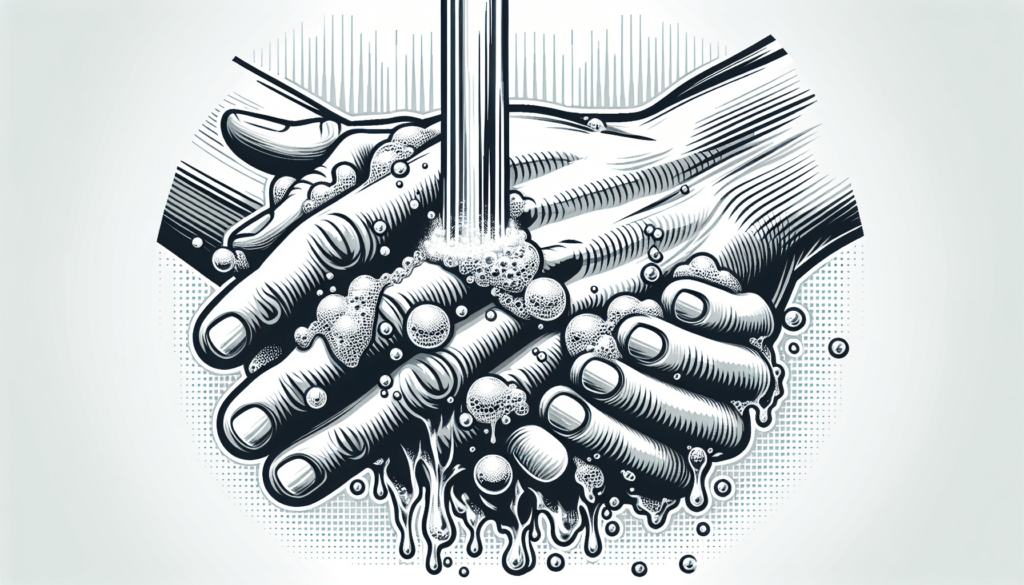In today’s world, staying healthy is more important than ever. In “Top Ways to Prevent the Spread of Infectious Diseases,” you’ll discover practical and effective strategies that you can easily incorporate into your daily routine. From practicing good hygiene and maintaining a clean environment to staying informed about vaccinations and travel guidelines, this guide will empower you with the knowledge to protect not just your health, but the health of those around you. Let’s dive in and learn how you can make a positive difference in your community’s well-being! Have you ever wondered what you can do to prevent the spread of infectious diseases? It’s something we all have to think about in today’s world. In this article, we’ll walk through some practical and effective ways to keep ourselves and our loved ones safe.

Understanding Infectious Diseases
Infectious diseases are caused by pathogens like bacteria, viruses, fungi, or parasites. These pathogens can spread directly or indirectly from one person to another. Understanding how these illnesses spread is the first step in preventing them.
Modes of Transmission
Infectious diseases can spread through various means. Knowing these can help you in taking the right steps to protection.
Direct Contact
Direct contact transmission happens when an infectious agent is transferred from an infected person to a healthy individual through physical touch. This could be anything from a handshake to intimate contact.
Examples:
- Shaking hands
- Hugging
- Kissing
Indirect Contact
Indirect contact happens when the infectious agent is transferred to a person through an intermediary object or surface.
Examples:
- Doorknobs
- Towels
- Utensils
Droplet Transmission
Droplet transmission occurs when a person expels droplets through coughing, sneezing, or talking and those droplets come into contact with someone else.
Examples:
- Sneezing
- Coughing
- Talking closely
Airborne Transmission
Airborne transmission can occur when infectious agents are suspended in the air and inhaled. This makes it crucial to understand how to maintain good air quality and practice respiratory hygiene.
Examples:
- Certain strains of influenza
- Tuberculosis
Importance of Hygiene
Hygiene is your first line of defense against infectious diseases. Let’s dive deeper into the most essential hygiene practices.
Hand Hygiene
Washing your hands might seem basic, but it’s incredibly effective. Use soap and water to scrub your hands for at least 20 seconds. If soap and water aren’t available, use a hand sanitizer with at least 60% alcohol.
Steps for effective handwashing:
- Wet your hands.
- Apply soap and lather well.
- Scrub all parts of your hands.
- Rinse thoroughly.
- Dry your hands with a clean towel or air dryer.
Respiratory Hygiene
Cover your mouth and nose with a tissue or your elbow when you cough or sneeze. Dispose of the tissue immediately and wash your hands. This small step minimizes the spread of pathogens in the air.
Respiratory hygiene tips:
- Use a tissue or elbow to cover.
- Dispose of tissues properly.
- Wash or sanitize your hands immediately after.
Personal Items
Avoid sharing personal items like utensils, toothbrushes, or towels. These items can easily transfer pathogens from one person to another.
Vaccinations
Vaccinations are one of the most effective ways to prevent infectious diseases. By getting vaccinated, you not only protect yourself but also contribute to community immunity.
Types of Vaccines
There are several types of vaccines, each designed to target specific pathogens.
Inactivated Vaccines
These use a killed version of the germ that causes the disease.
Examples:
- Hepatitis A
- Rabies
Live-attenuated Vaccines
These use a weakened form of the germ.
Examples:
- Measles, mumps, and rubella (MMR)
- Varicella (chickenpox)
mRNA Vaccines
These use messenger RNA to instruct cells to produce a protein that triggers an immune response.
Examples:
- COVID-19 vaccines by Pfizer and Moderna
Vaccine Schedule
Follow the vaccination schedule recommended by healthcare professionals. Timely vaccinations are crucial for effective immunity.
| Age Group | Key Vaccines |
|---|---|
| Infants | Hepatitis B, Polio |
| Children | MMR, Chickenpox, DTP |
| Adolescents | HPV, Meningococcal |
| Adults | Influenza, Tetanus |
| Elderly | Shingles, Pneumococcal |
Healthy Lifestyle Choices
A healthy lifestyle can bolster your immune system, making it easier for your body to fend off infectious diseases.
Nutrition
Proper nutrition is key. A balanced diet rich in fruits, vegetables, lean proteins, and whole grains can strengthen your immune system.
Nutrition tips:
- Eat a variety of fruits and vegetables.
- Include lean proteins like chicken and fish.
- Opt for whole grains over refined ones.
- Limit sugar and saturated fats.
Exercise
Regular physical activity can improve your immune system. Aim for at least 30 minutes of moderate exercise most days of the week.
Exercise tips:
- Find an activity you enjoy.
- Mix cardio with strength training.
- Don’t overdo it; rest is important too.
Sleep
Quality sleep is essential. Aim for 7-9 hours per night to allow your body to repair and regenerate.
Sleep tips:
- Set a consistent sleep schedule.
- Create a restful environment.
- Avoid screen time before bed.

Safe Food Practices
Foodborne illnesses are a common source of infectious diseases. Implement safe food practices to minimize this risk.
Temperature Control
Keep hot foods hot and cold foods cold. Proper temperature control can prevent the growth of harmful bacteria.
Food temperature guidelines:
| Food Type | Minimum Internal Temperature |
|---|---|
| Poultry | 165°F (73.9°C) |
| Ground meats | 160°F (71.1°C) |
| Fish | 145°F (62.8°C) |
| Leftovers | 165°F (73.9°C) |
Cleanliness
Wash your hands, utensils, and surfaces before and after handling food. Cross-contamination can easily occur in the kitchen.
Cleanliness tips:
- Wash hands for 20 seconds before and after handling food.
- Use separate cutting boards for meats and vegetables.
- Sanitize surfaces regularly.
Storage
Proper storage of food is crucial. Keep perishable items in the refrigerator and be mindful of expiry dates.
Storage tips:
- Store perishables below 40°F (4°C).
- Check expiry dates regularly.
- Use airtight containers to prevent contamination.
Safe Travel Practices
Traveling can expose you to different pathogens. Here are some smart travel practices to keep you safe.
Before You Go
Research your destination to understand the prevalent diseases and necessary precautions. Ensure your vaccinations are up to date.
Pre-travel checklist:
- Research destination health risks.
- Update your vaccinations.
- Pack a travel health kit.
During Travel
Be mindful of what you eat and drink. Stick to bottled water and avoid raw or undercooked foods in areas with questionable food safety practices.
During travel tips:
- Drink sealed bottled water.
- Avoid ice in drinks.
- Steer clear of street foods.
Returning Home
Monitor your health upon returning home. Seek medical advice if you experience unusual symptoms.
Community Efforts
While individual efforts are crucial, community measures can also play a major role in preventing the spread of infectious diseases.
Public Awareness
Public awareness campaigns educate people about infectious diseases and how to prevent them. Support these initiatives and share credible information.
Sanitation
Community sanitation efforts can drastically reduce the prevalence of infectious diseases. Support projects that aim to improve water quality and waste management.
Volunteering
Get involved in community health efforts. Volunteering can make a significant impact and also spreads awareness.
Ways to volunteer:
- Join local health campaigns.
- Participate in sanitation drives.
- Share information on social media.
Healthcare System
A robust healthcare system is essential in managing and preventing the spread of infectious diseases.
Access to Healthcare
Ensure everyone has access to quality healthcare. This includes regular check-ups, vaccinations, and prompt treatment of illnesses.
Emergency Preparedness
Emergency preparedness plans are crucial. Know the protocols in place for disease outbreaks and follow them meticulously.
The Role of Technology
Technology can aid in the fight against infectious diseases through various means.
Telehealth
Telehealth services allow remote consultations, reducing the need for hospital visits and minimizing exposure to pathogens.
Mobile Applications
Mobile apps can track symptoms, provide health advice, and alert users about outbreaks.
Data Analysis
Advanced data analysis can predict outbreaks, helping authorities to act faster.
Conclusion
Preventing the spread of infectious diseases requires a holistic approach involving hygiene, vaccinations, healthy lifestyle choices, safe food and travel practices, community efforts, and robust healthcare systems. By adopting these practices, you not only protect yourself but also contribute to the well-being of your community.
Remember, it’s the small steps that build up to a larger change. Stay informed, stay proactive, and together, we can create a healthier world.
